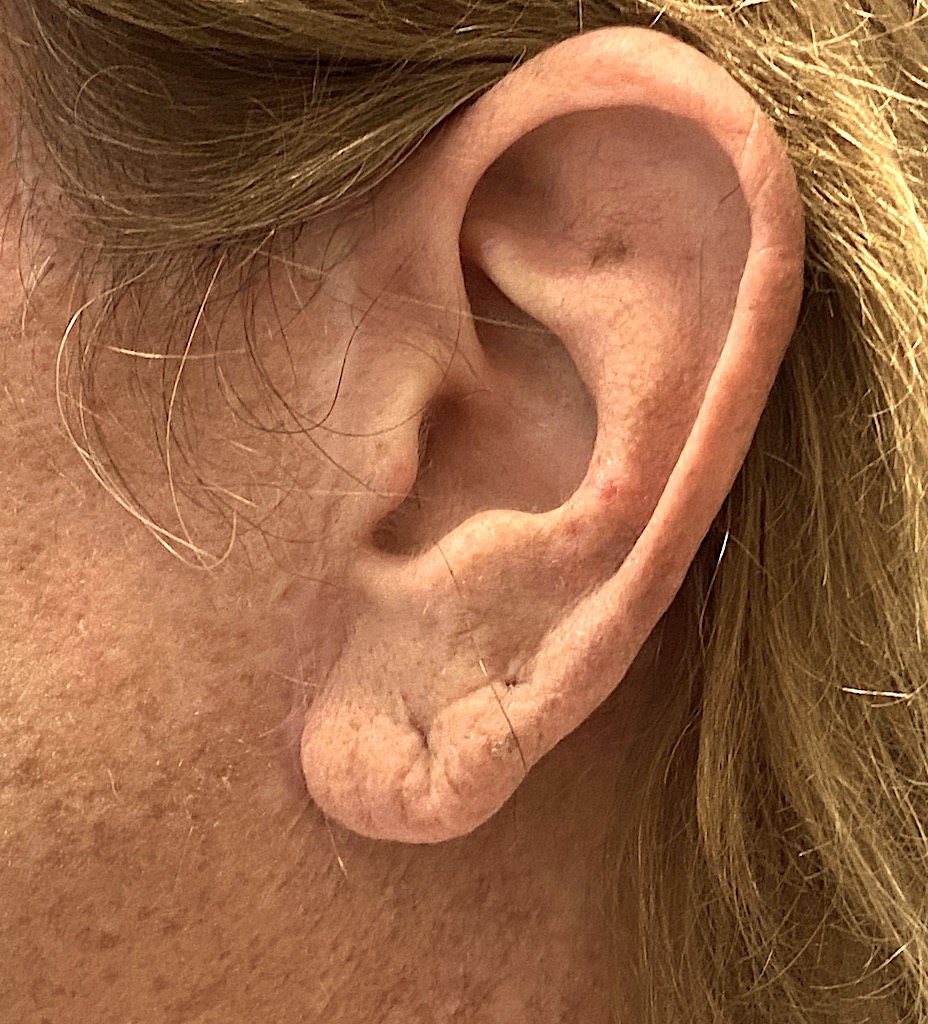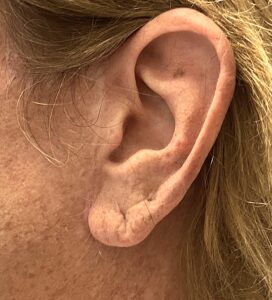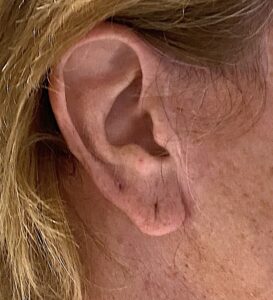In reducing the length of the long ear the simplest and most effective strategy is to reduce the size of the earlobe. Whether by natural size or aging the enlarged earlobe is a major contributor to the perceived size of the ear. It lacks a cartilage component, unlike what lies above it, making it unnecessary for structural support of the ear. As a result the earlobe can be generously reduced reducing as much as1 cm of vertical height ear reduction in some patients..
There are numerous techniques described for earlobe reduction but I find that the inferior helical excisional technique to be the most effective. It provides the greatest amount of reduction and places the scar in the most inconspicuous location. It also accounts for how the earlobe attaches to the face (attached vs unattached) and allows for adjustments in that regard.
Most female earlobe reduction patients have piercings, often more than one in the lobe. But the most inferior piercing will often come close to the inferior lobe excision line. If low enough it will be removed as part of the excision if enough lobe length is removed. If not it will come close to the new bottom of the earlobe. Such a low piercing hole will make it virtually unusable later.
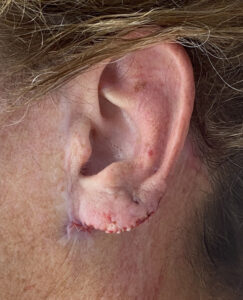
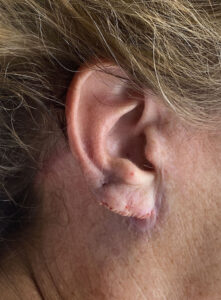
Dr. Barry Eppley
World-Renowned Plastic Surgeon

